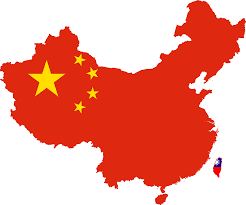An unassuming twist in US trade policy has quietly nudged Chinese tech equities higher, marking a turning point that may reshape investor sentiment across sectors.
Investors might have noticed today’s modest uptick in mainland indices, but beneath that surface lies a strategic recalibration with far-reaching implications. The United States has removed export licensing barriers on specific chip-design software and key resource flows, while China, in parallel, has relaxed curbs on rare-earth mineral exports. This reciprocal easing is more than symbolic, it reopens pipelines critical to semiconductor development and industrial manufacturing across Asia.
For Chinese firms, especially those entrenched in electronic design automation, the shift unlocks access to indispensable software tools previously caught in regulatory limbo. These are not high-end chips but essential design frameworks powering everything from telecommunications infrastructure to electric vehicles. With over 70% of the local design market previously reliant on overseas software, the restoration comes as a material operational tailwind.
In Shenzhen and Suzhou, factories tied to chip assembly and testing are ramping up production schedules. Listed companies in optical modules, printed circuit boards and assembly services have already begun to price in the operational relief. The rally among component suppliers and industrial manufacturers reflects renewed confidence that Beijing’s dual strategy, domestic investment paired with reopened global access, is beginning to gain traction.
Asia-wide, semiconductor players have responded positively, suggesting the US-China adjustment is rippling beyond the mainland. Korean, Japanese and Taiwanese chip firms saw gains on expectations that regional supply chains could now stabilise further. Even Western software vendors, long cut off from their most active markets in China, are seeing clearer pathways to restored revenue lines.
But investors should not confuse this shift with a blanket reversal. Controls on advanced computing hardware, including top-tier AI chipsets, remain firmly in place. What has changed is access to mid-tier software infrastructure, the tools that underpin most everyday industrial chipmaking. This nuance matters. It signals a de-escalation that is targeted and tactical, not wholesale. Still, for listed firms in China’s hardware and electronic infrastructure space, the relief is tangible.
More broadly, the trade realignment comes alongside an 800 billion yuan stimulus focused on industrial and infrastructure development. In combination, these policies appear designed to insulate China’s growth strategy from further external shocks, while tactically leveraging improved relations to re-engage in global supply networks. Services data may still point to weakness, but the manufacturing base is reawakening, and equity markets are starting to reflect that divergence.
This moment also reinforces the value of resilience-focused positioning. Investors exposed to China’s manufacturing recovery, semiconductor infrastructure, or specialised industrial tech may find the current inflection point justifies a closer look. As supply chains recalibrate, firms that can straddle both domestic and international operating channels stand to benefit most.
Even as strategic competition between the US and China continues, the latest developments hint at a more pragmatic tone beneath the rhetoric. The return of key trade flows, be it software or resources, suggests mutual recognition that decoupling has practical limits. For investors, the opportunity lies in identifying the companies best placed to operate in this evolving middle ground.
China’s long-term pivot remains focused on self-reliance backed by global integration where feasible. Today’s policy shift, while limited, reveals a broader intent to re-enable functional trade mechanisms, especially where national growth objectives align. For strategic investors, it’s not about the immediate rally, but the signal that previously shuttered corridors may be quietly reopening.
Fidelity China Special Situations PLC (LON:FCSS), the UK’s largest China Investment Trust, capitalises on Fidelity’s extensive, locally-based analyst team to find attractive opportunities in a market too big to ignore.








































